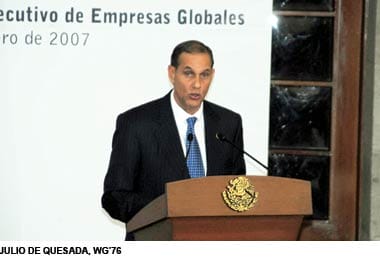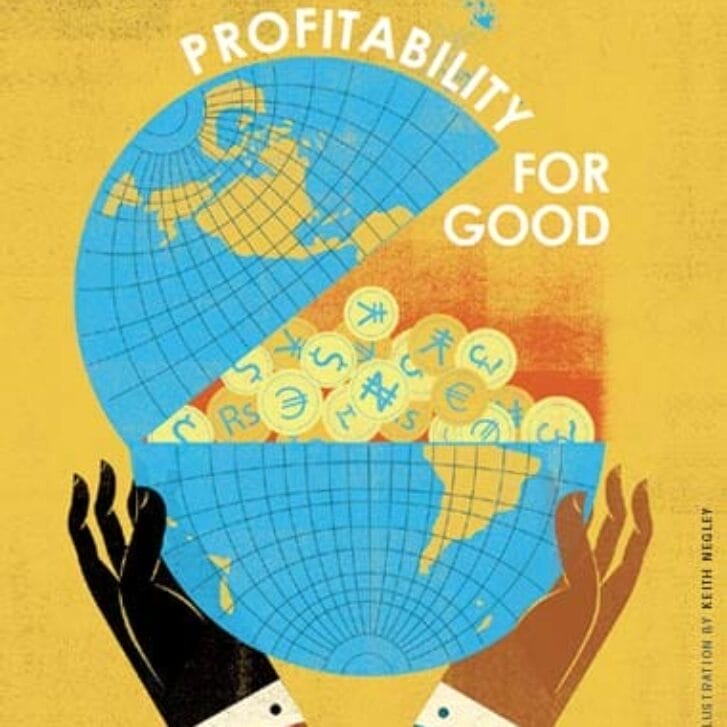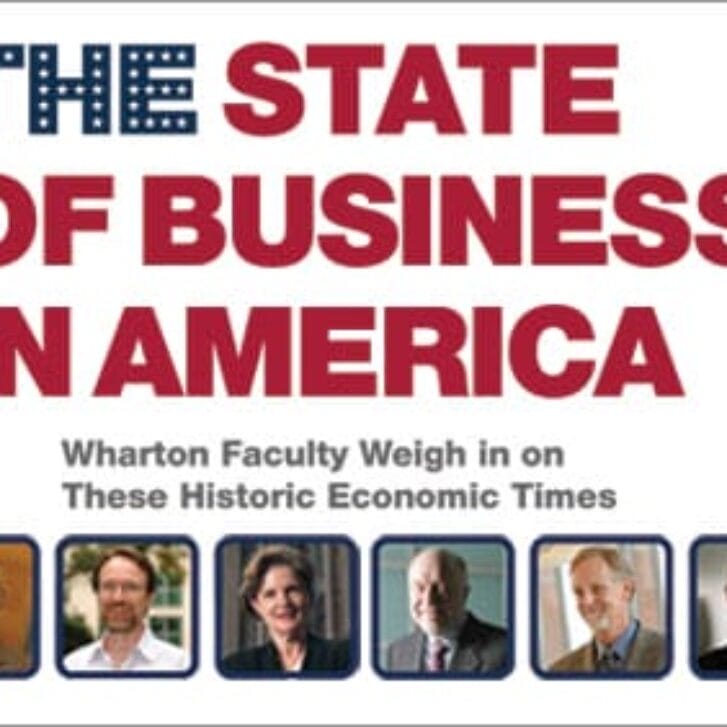Across the world, companies in emerging markets are acquiring assets in the U.S., Western Europe, and other developed markets. What does it all mean?
Just three years ago, IBM was known for making some of the most coveted laptops in the world. The sleek, black ThinkPad, with its fold-out keyboard, was a status symbol in corporate conference rooms and on the business class section of airplanes.
That’s why it was so surprising to some in 2005 when the U.S. tech giant sold its PC business for $1.75 billion to a relatively obscure Chinese computer maker called Lenovo. Big Western corporations had come to view China and other parts of the developing world as low-cost sources of manufacturing and labor. But suddenly a young company from an emerging market was looking to play a vastly different role, using strategic M&A to carve out a position of global leadership. Lenovo even promised to open a self-styled Innovation Center in Research Triangle Park, N.C., a sign that the company intended to lead on a global scale.
Such deals, where a multinational corporation or investment fund in an emerging market acquires assets in the U.S., Western Europe, and other developed markets, have accelerated sharply during the last year, and are becoming larger than ever. Consider the following:
- In January, Chinese metal producer Shenzhen Zhongjin offered to pay $4.4 billion for Australian miner Herald Resources.
- India’s Tata Group in February announced a $1 billion takeover of U.S.-based General Chemical Properties Inc.
- Brazilian mining company CVRD in November closed an $18.7 billion acquisition of Canadian mining company Inca Ltd.
- Mexican cement giant Cemex last July closed a $16.7 billion acquisition of Australian construction company Rinker.
- Saudi investment fund SABIC last May acquired GE’s GE Plastics business for $11.6 billion, while OAO MMC Norilsk Nickle Group of Russia bought LionOre Mining International Ltd. of Canada for $6.3 billion.
Wharton alumni from across the globe are involved in every aspect of this new direction in cross-border M&A. Some are heads of companies making bids for U.S. and European businesses, while others are working, post-merger, to integrate operating divisions with very different cultures and styles. Others are assisting from the sidelines as consultants.
“It’s a really big phenomenon. And I think it’s going to change the global economy,” says Mauro F. Guillén, the Dr. Felix Zandman Professor in International Management and director of the Joseph H. Lauder Institute for Management & International Studies.
The sheer volume of emerging market acquisitions in the developed world is soaring. In 2005, the year of the Lenovo deal, there were 462 such instances, according to market researcher Dealogic. Those deals had an aggregate value of just $53 billion. In 2007, there were 718 such deals, worth a total of $189 billion. That’s still just a small fraction of the $4.5 trillion global M&A market, but it reflects a qualitative change. State- controlled sovereign wealth funds, with $2.9 trillion in assets under management, have likewise invested $69 billion recently in Citigroup, Merrill Lynch, and other companies that need capital to offset losses in subprime credit.
These new developing country multinationals are challenging global economic relationships that go back to colonial days, when the U.S. and the great powers of Europe put down stakes in Asia, Africa, Latin America, and other regions. Since this time, the global economy has largely been divided into clear strata. It was clear who was on top, and the rest of the world was playing catch up, at best. Now the boundaries between the haves and have-nots are starting to blur. Wealthy nations such as the U.S. are badly shaken by the widening crisis in the credit markets, and it’s not clear how, or even if, all the damage can be corrected.
At the same time, economies such as China, India, Mexico, and Brazil are taking off, closing centuries-old gaps in standards of living. Western Europe, Canada and the U.S., and Japan, known as the triad, controlled 80% of world trade in the 1980s and 1990s, according to Guillén. Now their share is down to 60%, and it will continue to decline.
“Fifty years from now, when we’re reading world economic history, it’s conceivable that this period of time, right now, will be viewed as a watershed historic event, the beginning of a shift in financial infrastructure, to a more global marketplace,” says Jerry Goldman, WG’74, a tax partner and global vice chairman with Ernst & Young.
The M&A market is helping to shape those global changes. From China to India and Russia, developing economies are using M&A to ensure that they have the physical and intellectual resources they need for the next stage of development. “Once these developing markets have secured the necessary resources through M&A, they will start building more internally,” Goldman says. Some developing markets, such as Brazil, have already moved on to that next step, upgrading ports, roads, and other infrastructures, he adds.
While such changes in the global economy aren’t necessarily a zero-sum game, the net effect is likely to benefit emerging markets, according to Guillén. As leadership of certain industries shifts to emerging markets, high-paying decision-making jobs will move. Over the next 20 or 30 years, that will affect the standard of living in the U.S. and Europe, as well as the global standing of cities.
THE HOWS AND WHYS
What’s behind this phenomenon? For one, the dollar’s decline has made U.S. assets a relative bargain. Pressure on the U.S. financial sector, meanwhile, has made it more difficult for large private equity firms to fund deals, and that has opened the door for cash-rich buyers from other parts of the world, which is, according to Goldman, “where capital is being generated.”
The global economy grew by about 4.9% in 2007, according to projections by the International Monetary Fund. Advanced countries grew about 2%, while the developing world outperformed. China set the pace with 11.2% growth, with India a close second at 9%. Rising prices for oil and other commodities helped fuel the growth. Regulatory changes in regions such as China and Russia have helped create a middle and upper class, which has attracted investment.
“The flow of capital over the last three decades shows it will go where the opportunity is. Excess money is being generated in many parts of the world where it has never been generated before, and smart people are looking to deploy it,” Goldman says.
Regional forces are also driving M&A. In India, multinational corporations such as Tata Group, which has been remarkably aggressive in the M&A market, are looking to the West for exportable brands and focusing on a range of sectors from steel to autos and hotels. Last December, for instance, Tata emerged as the winner in the auction of Ford’s Jaguar and Land Rover luxury brands, with a bid of about $2 billion. In 2006, it closed a $13 billion acquisition of Corus, a British steel company. Similarly, in early 2007, the Taj hotel company of India took over the Ritz-Carlton in Boston.
In China, M&A deals are largely driven by the country’s need for resources and know-how, not an interest in buying Western brands. The Lenovo deal included rights to the ThinkPad brand, but Lenovo was quick to drop use of the well-known name as soon as it was able to — three years ahead of schedule. Deals are instead focused on crucial areas such as mining, with Aluminum Corp. of China’s $14.4 billion bid for British miner Rio Tinto Group the largest example to date.
Chinese companies and government-backed investment funds also are making investments in other parts of the developing world, particularly Africa and the Middle East. In October, the Industrial and Commercial Bank of China, China’s largest bank, invested $5.5 billion in the Standard Bank of South Africa — a bet on rising growth and standards of living in sub- Saharan Africa. The 20% stake was the largest direct foreign investment in the history of South Africa. More deals are likely. ICBC is the largest bank in the world, with a market cap of $319 billion. It recently raised $22 billion in listings in Hong Kong and Shanghai, giving it plenty of capital for investments around the globe.
In Latin America, multinational corporations are looking abroad for brands as well. In 2004, Brazilian brewer Companie de Bebidas paid $7.25 billion for Interbrew, the maker of Canada’s iconic Labatts brand. “There have been tremendous changes in the last 10 years. Companies have evolved from being regional players to truly global companies,” says Julio de Quesada, WG’76, Managing Director of Grupo Financiero Banamex, Mexico’s second-largest bank. Banamex, based in Monterrey, Mexico, is owned by Citigroup. Quesada recently led a delegation of Mexican corporations to China in an effort to expand trade between the two countries, a sign of Mexico’s emergence as more than just a regional economic player.
Latin American companies also scour the global market looking for efficiency. Tortilla maker Gruma recently became the first tortilla maker in China, opening a manufacturing plant in Shanghai. Grupo Bimbo, the Mexican baker, has made acquisitions in Texas and Argentina. And Monterrey-based cement giant Cemex closed its $16.7 billion acquisition of Australian construction products company Rinker in July.
“It’s a truly global world, now. I was recently on vacation in Egypt, and I could see the Cemex trucks on the street. I have seen them in Southeast Asia as well,” de Quesada said.
In the Middle East, deals are often driven by the need to invest oil profits and to diversify beyond the oil industry itself. For example, Kuwait Petroleum in December said it would pay $6 billion for five Dow Chemical units, a logical extension of its oil business. In 2006, Dubai Ports paid $6.8 billion for British transportation company Peninsula and Oriental Steam Navigation Co.
For investment bankers reeling from the implosion of the credit markets, this emerging M&A market has created a growth opportunity. While global M&A deals fell 28% in the U.S. in January, according to analyst Meredith Whitney of Oppenheimer & Co., U.S. M&A activity fell 54%. Yet deal volume in Asia, excluding Japan, rose 37%. And deal volume in Latin America soared 137%. That has created a boom for certain banks such as Citigroup, which has a strong presence in Asia and other emerging markets.
LEADING ACROSS CULTURES
Such cross-border deals can be particularly challenging, difficult to negotiate and execute. Differences in corporate culture, social norms, political interests, regulatory regimes, and currency values add layers of complexity. “Integration of cross-border deals that bridge the developed and developing worlds take longer, and you have to figure that into the agreement,” says Jill S. Dailey, WG’98, an M&A partner with consultant Accenture.
The Lenovo deal faced many such issues. Jean Manas, vice chairman of M&A in the Americas at Deutsche Bank, said that as a rule of thumb, cross-border deals “take twice as much time to negotiate and are twice as hard to pull together. When you are working with two companies from the same country, they usually know how to value one another. That often isn’t the case with cross-border transactions,” said Manas, who worked on the Lenovo deal when he was a banker at Goldman Sachs.
Integrating the combined companies was similarly complex. “The number-one reason why a merger succeeds or fails is culture,” says Deepak Advani, WG’98, chief marketing officer and senior vice president for e- commerce at Lenovo’s North Carolina office. “We had to tackle that issue head on. Many people assume that there will be country culture issues in such a deal. But people underestimate the role of corporate culture, which is also very powerful.”
To smooth the way, Lenovo senior management emphasized a corporate culture based on trust, respect, and compromise. A global corporate exchange program was instituted, with the idea of exposing people to different cultures within the company. Nonetheless, challenges arose.
Last year, a design meeting in Raleigh brought on unexpected cultural differences. Advani and 12 others from Lenovo design centers in Raleigh, Beijing, and Yamato, Japan were brought together to develop a unifying concept, such as the old ThinkPad brand, to give Lenovo computers a unique look and feel. But cultural differences were apparent as the twoday discussions got under way, Advani recalls.
“A lot of colleagues from the East, and from China in particular, tend to think more and speak less. Our Chinese colleagues tended to form a point of view before expressing it. A lot of us in the West tend to think out loud. We tend to talk through issues as we are thinking,” says Advani. The group addressed the differences by resolving to gather input from everyone at the table, one by one, and listening more.
Still, the meeting led to a misunderstanding. The Western- based team said that the Lenovo product line should have a consistent look and feel, or what it described as “a common icon.” The design team from China disagreed. A debate went on for several hours, and people became angry, Advani recalls.
In the end, the group realized that language was their stumbling block. The Western team used the word “common” as a synonym for universal, while the team from China understood the word “common” as a synonym for ordinary. The group eventually resolved the misunderstanding and went on to develop the concept of the IdeaPad, a lower- priced laptop that was launched earlier this year.
Despite such cultural glitches, Advani believes that, overall, the Lenovo/IBM deal is a successful one. Lenovo has been profitable, shown growth, and taken market share in all geographies for four quarters straight, according to Advani. And the stock, which debuted in Hong Kong at $2 a share, has risen as high as $8.50 a share, although it has fallen back to $5.50 a share as global financial and economic concerns have increased.
“The entire world is developing all the time, so just what do bankers mean when they use the term? The developing, or emerging world includes Africa, the Middle East, North and Southeast Asia, and Latin America, according to Dealogic. Nothern Asia is generally understood to mean the Asian part of Russia or the former Soviet Union. That can include regions from Siberia to some Central Asian countries such as Uzbekistan. Southeast Asia, for Dealogic’s purposes, can include countries such as Cambodia and Thailand. Dealogic also includes China in its compilation of emerging market deals. The definition can differ from source to source, though. Bustling Singapore, for example, is in Southeast Asia. But it hardly fits the definition of an emerging world economy. For M&A purposes, the emerging world sets aside the Caribbean. While the regional economy may fit the profile of the developing world, it is home to many off-shore U.S. companies such as Bermuda-based serial telecom acquirer Global Crossing.”
Like Lenovo, Bramco Group, the Bahrain-based stone mining giant, faced cultural differences when it acquired assets from German company Hansgrohe, known for its Grohe faucets, says Kanika Dewan, W’98, president of the Bramco’s Natural Stone Depot, a Metuchen-N.J.-based decorative stone division. Bramco did the deal because it wanted Grohe’s existing design expertise, which is crucial in the increasingly competitive high-end architectural and building sector. The developed world has lots of companies with valuable brands that make good acquisitions for emerging market companies that want to expand beyond their own borders, she says.
Dewan, who was born in India, raised in Bahrain, and educated in London and the U.S., says the cultural complexities of the deal surfaced immediately. “The developing world works in a less structured environment. While that brings flexibility to systems across all levels, the approach in Germany is very different, because employees are used to a less free-wheeling workplace. Employees and clients in Germany can’t work in that environment,” she says. The new division, known as Bramco Grohe, has used rotational training to bridge cultural differences, with German employees training in Bahrain and vice versa.
Bramco’s acquisition strategy also reflects the developing world’s need for resources and raw materials. Dewan says the company noticed that recent samples of Uba Tuba, a popular green granite from Brazil, were lined with cracks. So Bramco acquired a mine in India that produced a similar stone of higher quality.
AN EVOLVING FINANCIAL INFRASTRUCTURE
Despite its breakneck growth, the developing world still accounts for just a tiny fraction of the world’s overall M&A market. And while that percentage is bound to grow, it will be many years before the outbound deal volume from Latin America or China or India begins to rival that of the developed world, experts say. “There’s no question that China and Russia need to do more to regulate corporate activities,” says Goldman of Ernst & Young.
A multi-polar M&A market also requires deeper capital markets to support it. As the recent crisis in the U.S. and British capital markets shows, it can be risky to rely on the developed world to finance deals. More markets need to follow the lead of Hong Kong and Shanghai, and develop their own stock exchanges and credit markets.
There’s some evidence that such a financial infrastructure is evolving. In Mexico, for instance, companies such as Telmex can now issue 30-year debt denominated in pesos. “That was unheard of 10 years ago,” says de Quesada.
Political opposition is another reality that impedes foreign investment in developed markets. In 2006, for example, The Committee on Foreign Investment, an interagency group in the U.S., opposed plans by Dubai Ports to buy P&O, a British company that managed ports in the U.S. Dubai Ports was eventually pressed by Congress to sell the British company’s U.S. operations to U.S.-based AIG.
“There is a certain protectionist reaction in the United States, and this isn’t new,” says Stephen J. Kobrin, William H. Wurster Professor of Multinational Management. “There always has been a lot of xenophobia about foreign companies buying American firms,” he said, adding that anti-Chinese and anti-Middle Eastern sentiment in M&A deals involving U.S. targets may not be entirely irrational and can effect whether such deals can close.
But outside of deals that tread into defense, telecommunications, or other industries that can be closely linked to national security, most deals are allowed to proceed without much fuss. In fact, some M&A buyers from the developed world say it’s actually easier to invest in the U.S. than it is to invest in emerging markets. “Overall, there’s less regulation in the U.S. than there is in many developing markets, which have stricter controls over importing and exporting goods and foreign ownership of companies,” says Dewan of Natural Stone Depot.
A few years ago, emerging markets accounted for just a handful of companies in the Fortune Global 500. Now 10% of the world’s biggest corporations come from developing markets, if South Korea and Mexico are included in the tally, according to Dailey of Accenture. This number would be even higher if it included Western companies that have roots in the developing world. Mittal Steel, which is based in London but has its roots in India, acquired rival Arcelor of Luxembourg in 2006. The $22.7 billion deal was launched by Aditya Mittal, WG’96, son of Mittal founder Lakshmi Mittal, who is now president of the combined companies.
The rise of emerging market M&A captures the state of the global economy at a crucial point. Western economies face slowing growth, if not outright recession, thanks to their bursting credit bubbles. Their assets are cheap, especially in the U.S. where a weak dollar has put the economy on sale. The West needs capital, especially in its troubled financial sector. Cash-rich investors from Asia and other emerging markets are happy to oblige them, making investments in banks and private equity firms and acquiring a range of corporate assets. This has brought a new relationship between the developed and the developing world, one of slowly but steadily closing gaps in wealth, power, and influence. It’s a dynamic that is here to stay.
Steve Rosenbush is a freelance writer based in New York. He has covered finance and technology for BusinessWeek, USA Today, and other publications.




























